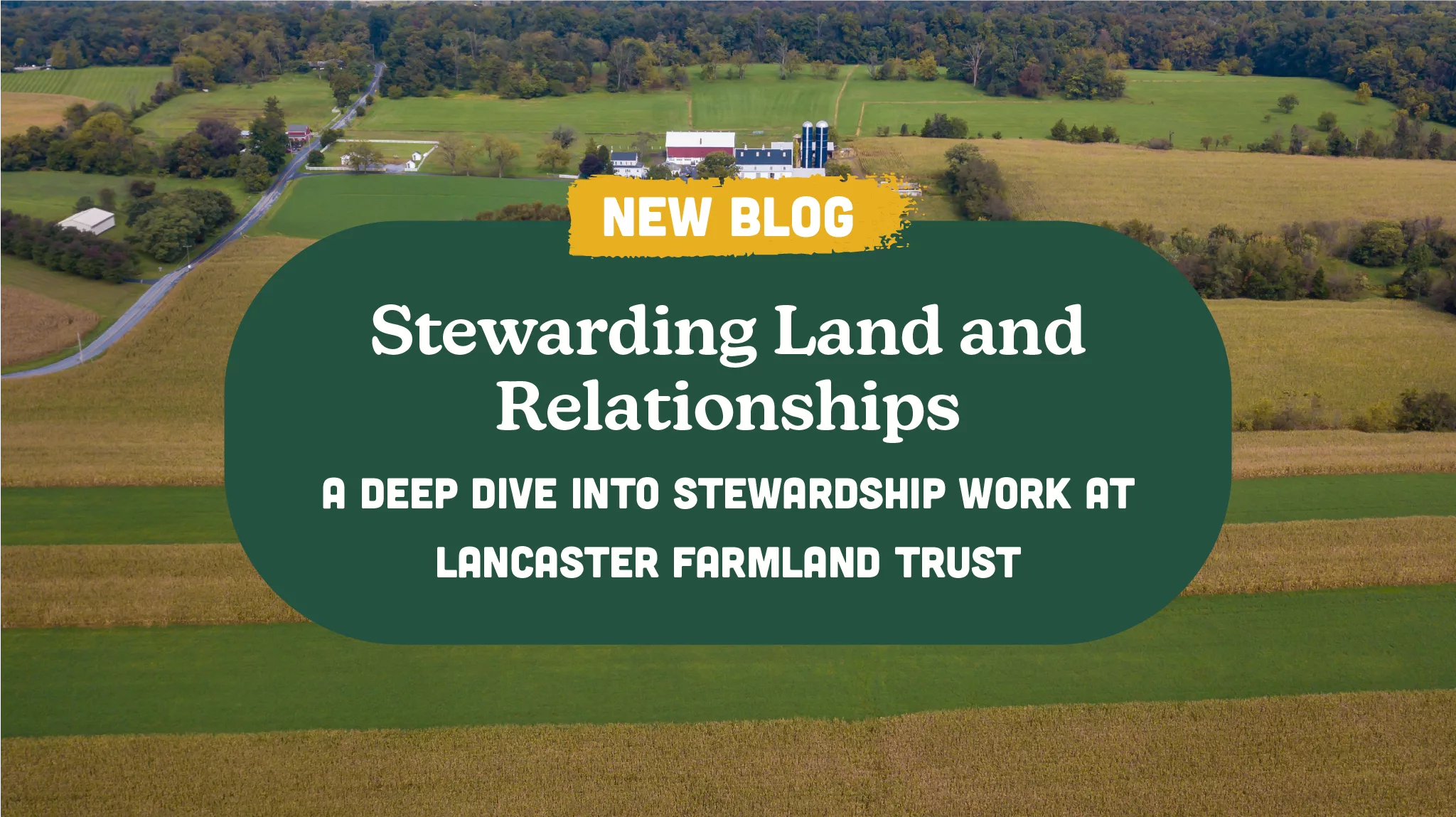Stewarding Land and Relationships

Stewardship is one of the most essential parts of the preservation process at Lancaster Farmland Trust (LFT), but for many, this part of the process remains a mystery. If you’re new to the world of preservation, you may have never even heard the term “land stewardship.” So what exactly does it mean—and what does it look like in practice at LFT?
When a farm is preserved through LFT, it’s protected forever. That means LFT has a long-term obligation to ensure the terms of the preservation agreement—called an easement—are being followed. Stewardship is the ongoing process of checking in on these protected farms and maintaining open lines of communication with landowners to ensure compliance with those agreements.
A typical day in stewardship can begin with site visits to farms where there may be questions or concerns related to the easement. These concerns can range from impervious space limitations to subdivision requests, property transfers, and more. LFT staff meet with landowners to discuss these topics and collaboratively work through solutions. At its heart, stewardship is about problem-solving—finding paths forward that both honor the preservation agreement and support the farmer’s needs.
Preparation is key before every farm visit. This includes reviewing the property’s easement, the landowner’s history with LFT, and farm maps. Copies of the easement are brought along to ensure the landowner has easy access to it during the conversation.
Communication is one of the most critical elements of stewardship. LFT believes in intercepting potential issues before they become real problems—and most farmers are excellent partners in that effort. A proactive, collaborative approach helps foster positive relationships and trust between LFT and the farming community.
But stewardship isn’t just about rules and restrictions—it’s also about opportunity. During visits, LFT staff often ask landowners if there are any conservation practices they’re interested in implementing. LFT can help secure funding for farmers to install Best Management Practices (BMPs) at no additional cost. These could include streambank fencing, cover cropping, or other projects that enhance the health of the land.
Land stewardship starts with relationship stewardship. LFT’s team wants every farmer to know that they’re not alone after preservation; LFT is a partner and a resource, not an enforcer. The goal is to help farmers feel supported and recognized as key players in a broader mission to protect and preserve Lancaster County’s agricultural heritage.
After returning from a farm visit, stewardship staff record all findings and interactions. With more than 600 easements to oversee, meticulous documentation is essential. Every phone call, email, and site visit is logged to ensure that no detail slips through the cracks.
In addition to regular monitoring, LFT also visits farmers new to preservation to introduce the organization, deliver important paperwork, and start building a lasting relationship from day one.
At Lancaster Farmland Trust, preservation is only the beginning. Once a farm is preserved, that farm becomes part of a long-term partnership. Stewardship ensures that protected land remains productive, healthy, and in harmony with the values of conservation.
LFT’s stewardship team firmly believes that healthy farms lead to a happy Lancaster. The mission of farmland preservation is about more than protecting land—it’s about uplifting a way of life and supporting the people who make it possible.
To learn more about our stewardship work, click here, or click here to explore our broader conservation efforts. And don’t forget to follow us on social media for regular updates on preservation, conservation, and stewardship in action!
